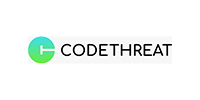Application Security
Today, the significance of the secure software development concept is well recognized and has been accepted as an element that reduces the cost and time of software development and increases the quality of the software. In addition, it is the most effective way to prevent various security incidents at the source, which may otherwise occur during the use of the software.
Static code analysis solutions examine the source code, reveal vulnerabilities and their causes, prioritize vulnerabilities and determine ways to fix them. It allows code developers to stay informed about best practices. It is possible to use these to examine all codes, including mobile applications.


It is known that web-based assets are under serious attack today. Scanning and reporting the vulnerabilities of applications dynamically during the testing or operation phase is an important part of application security. Detection and verification of vulnerabilities and integration into DevOps processes and tools can be achieved with DAST.


Today, the usage rate of open-source in the application development cycle has increased significantly. Application development in organizations is based on libraries and frameworks downloaded from many sources such as GitHub, npm, Maven, and Pypi. Software composition analysis and open source security have become a crucial part of performing security scans of open source libraries and frameworks, revealing their vulnerabilities and risks, and auditing relevant license violations, and creating a secure lifecycle in application development.

In application development, "Planning" is the first and most important step to ensure the DevSecOps culture can operate. Adapting the security ecosystem to the planning phase helps instill the understanding of "Security By Design" in application development. Identifying and eliminating existing risks in the early stages will minimize a possible security incident in the ongoing processes of DevOps. With automated threat modeling tools, flow diagrams can be constructed and risks, compliance challenges, and threats can be run using a model.

One of the fundamentals of application security is increasing the security awareness of software developers. In the secure software development lifecycle, developers must receive basic security training on topics such as OWASP Top 10 and new attack vectors. New generation "challenge" platforms allow organizations to increase the security awareness of every software developer in addition to managing their motivation.

Cloud-based next-generation application architectures, shifting from monolithic architecture to microservice architecture, are one of the most popular solutions for today's transformation. Dockerized environments, Public-Private Cloud architectures, Kubernetes clusters used in this framework have created new security problems within the security ecosystem.
While the vulnerability detection of dockerized images used in these environments is the most fundamental issue in container security, it is also important to detect the security risks that these images may pose in runtime environments. Many other topics such as microservice level firewall, IPS, WAF capabilities, authorized access management to container areas, password safe management, process control, compliance, and regulatory compliance are addressed to be solved within the container security solution set.
Web services, which increase day by day, play an important role in the business processes of organizations. Many organizations have to deal with hundreds of different attacks against web applications and web APIs they open for access during the day. Web Application firewalls examine and detect in-line traffic to web services and have the ability to block malicious traffic. It is crucial that WAF solutions, which can be designed with security models based on negative and positive security understanding, are integrated by next-generation microservice architectures.

Organizations are not always challenged with known attacks. Attackers use multiple different methods to hijack or exploit web applications. Methods include identity theft, use of fake accounts, exploitation of personal data, web scraping, and use of BOT. The use of new generation detection systems can be effective in detecting these attack vectors, which are difficult to detect with WAF tools.
With an increased volume of in-house mobile and web applications development, fraudulent activities through these channels have also increased dramatically.
Fraudulent activities require attackers to use cyber attack vectors and methods and have new capabilities in terms of detection mechanisms. With OFD technology, mobile SDK, and web JS aggregators, users can prevent malicious transactions (especially banking transactions). In addition to the detection of threats, device profiling, user behavior analytics, navigation control, and other fraudulent activities can be detected.
